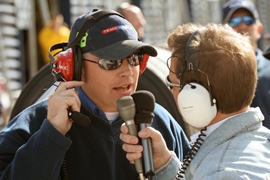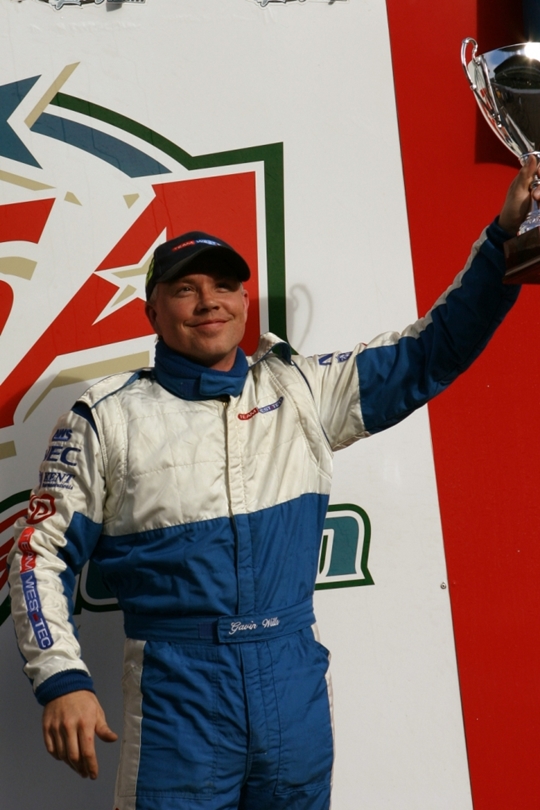The company has also developed an on-site F3 driving simulator,
a vital tool for its own and other teams’ drivers. When a single day’s
test session in a Le Mans car can cost £30,000 (€33,750), the simulator’s
value becomes apparent. Using this technology as a basis, the company
plans to develop a systems simulator for the Top Fuel Dragster once it has
begun to produce data on the track.
In the main hall, it seems something of a surprise to see two
Lucas Oil Top Fuel chassis ranged alongside F3 and FF cars. Ben Allum is
engaged full-time in meticulous preparation of the racing machine for its
FIA Main Event debut in May while other crew members assist part-time. The
second chassis is the show car.
In 1992, another circuit racing entrant, Colin Bennett’s Cobra
Motorsport, disclosed plans to field a Top Fueler, but the venture never
materialised. So what, 19 years later, prompted Team West-Tec to step into
drag? Gavin Wills explains:
“Quite simply, we foresee substantial business potential in
Pro-level drag racing. The spectator experience is quite special, as good
as anything in motorsport and better than most. In our experience,
corporate involvement starts with client entertainment, and in terms of
entertainment quality, the drag racing ‘show’ is superb. Furthermore, in
comparison with our circuit racing business, a drag team’s cost base is
attractively low.
“Drag racing’s two main drawbacks are the weather and poor
track facilities. Everyone in the sport knows that rain stops the show,
and is accustomed to that, but that’s no good for high-level corporate
customers and potential investors. You can’t stop it raining, so the sport
needs to develop effective contingency programmes to cope with that. Track
operators also need to improve the facilities they offer their visitors.
Some tracks are better than others but, to me, these improvements are the
first essential, the primary requirement. If these matters can start to be
addressed, I think drag racing has much it can offer us. We are developing
a business plan that foresees our growing
involvement.”
And if proof were needed of Mr. Wills’ commitment to his
business, last year, he says, he spent 48 of the 52 weekends attending to
his company’s interests at racetracks all around the world. Moreover, to
acquaint himself better with the drag racing experience, he obtained an
NHRA Top Alcohol Funny Car licence at Frank Hawley’s Drag Racing
School.
Drag racers may be surprised to learn that their costs are
considered comparatively low. According to Britain’s Autosport magazine, a driver
seeking a season’s racing in Formula Renault UK needs to bring UK£200,000
(€230,000) to the deal; for British F3, the figure is half a million
pounds, perhaps three quarters of a million for a front-rank ride. Mr.
Wills does not dispute these figures.
“Each of our F3 cars is supported by an individual business,
and we currently have four undertaking the full European Open series with
a couple more planned later in the year. In sponsorship terms, the kind of
investors with whom we deal will expect to take a top-level corporate box
at Twickenham, say, or Royal Ascot, which is why we place so much emphasis
on drag racing raising the standard of its facilities. We feel the drag
racing ‘show’ is good enough to merit this kind of interest and
investment.”
Of course, measured by money-versus-distance, major league drag
racing’s costs and rewards might match anything in motorsport. At
Indianapolis in 2010, Larry Dixon collected US$100,000 for winning Top
Fuel at NHRA’s US Nationals. For winning the Indy 500, Dario Franchitti
netted almost 28 times as much but had to race 500 times further to earn
it. The $5 million per year said to be the going rate to support a leading
NHRA fuel team seems small change alongside other major motorsports. Yet a
Pro driver who completes every qualifying session and reaches every final
round on NHRA’s current 22-race calendar (never yet achieved) would cover
precisely 44¼ miles in an entire season, roughly one quarter the distance
of a single F1 Grand Prix, or 18 laps of a NASCAR superspeedway. Multiply
up those sums and drag racing finances would soar to the
heavens.
Such calculations, though, are academic. The key point is,
‘mainstream’ motorsport represents an untapped resource for drag
racing.
Rubbing shoulders with racing people of all kinds at events
such as Autosport-International and the Goodwood Festival Of Speed, one
soon notices how little drag racing awareness exists in the wider
community. Now that Gavin Wills has spied business value for his company
in the sport, Andy Carter, Ben Allum and the Lucas Oil team will be
determined to endorse his judgement with fresh championship-calibre
successes. Perhaps then Team West-Tec’s pioneering initiative might tempt
others to venture across the divide and evaluate drag racing for
themselves.

